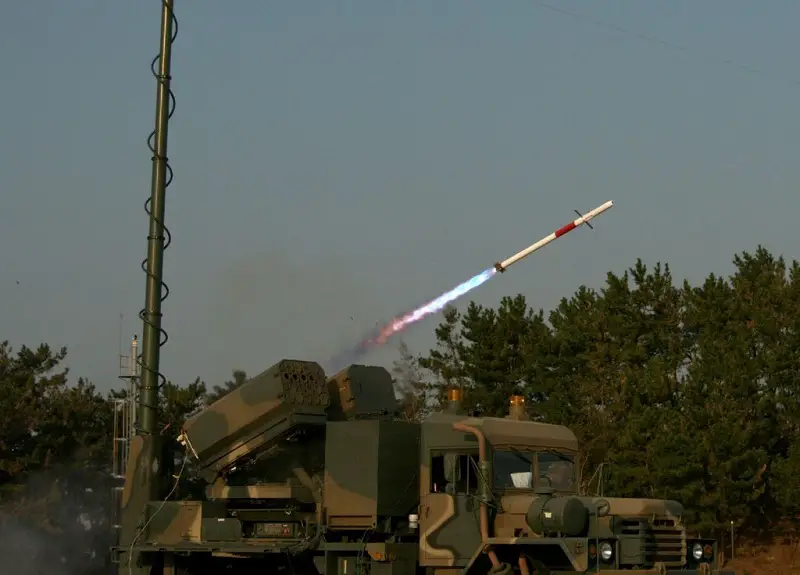The U.S. Navy is considering the adoption of South Korea’s Poniard (known locally as Bigung) multiple launch guided rocket system to bolster its defenses against drone swarm attacks. LIG Nex 1, a leading South Korean defense contractor, is actively engaged in discussions with the United States government to finalize an export deal for the “Bigung” 70mm laser-guided anti-ship rocket system. If successful, this would mark a significant milestone as the first time a South Korean full weaponry system is integrated into the US Navy’s arsenal. The genesis of this potential collaboration can be traced back to the year 2000, when al-Qaeda perpetrated a devastating attack on the USS Cole, a US Navy guided-missile destroyer stationed in Yemen’s Arden Harbor. The use of small, fast-moving vessels laden with explosives highlighted the urgent need for cost-effective, agile missiles capable of neutralizing such threats.
Traditionally, US Navy warships have relied on long-range anti-ship missiles like the “Harpoon” sub-sonic cruise missiles or “Hellfire” missiles. However, these options come with significant costs, with Harpoon missiles priced at around $3 million per unit and Hellfire missiles at approximately $150,000 per unit, making them less feasible for countering smaller, agile threats. Enter the Bigung system, offering a 700mm low-cost guided imaging rocket (LOGIR) at a fraction of the cost. Priced at around 40 million won ($30,000) per unit, Bigung provides a cost-effective solution without compromising on range, boasting a maximum reach of about eight kilometers. Positioned as a specialized solution tailored to the demand for affordable anti-ship missiles suitable for agile vessels, Bigung fills a crucial niche in the market.

An official from LIG Nex 1, speaking anonymously to Aju Business Daily on March 12, disclosed that LIG Group leader Koo Bon-sang is scheduled to visit the US for export contract negotiations regarding Bigung missiles. Following successful comparative testing by the Pentagon in April 2020, LIG Nex 1 has been actively participating in US government-led foreign comparative testing (FCT) exercises for Bigung missiles since 2023. With two FCTs remaining in 2024, LIG Nex 1 is optimistic that Bigung missiles will meet the stringent standards set by the US Navy, paving the way for final negotiations with the Pentagon. South Korea’s defense industry foresees further opportunities, anticipating potential talks with Washington regarding exports of the Shingung short-range man-portable air defense system (KP-SAM) if Bigung is adopted by the US Navy.
The 70 mm (2.75 inch) system, which was developed by the Agency for Defense Development and LIG Nex1 to simultaneously engage multiple fast-moving maritime targets, is currently operated by the Republic of Korea Marine Corps (RoKMC) as a mobile coastal defence system and is expected to replace older South Korean coastal defence systems by 2024. The Bigung, which has now the become the first such South Korean system to pass the Pentagon’s Foreign Comparative Testing (FCT), has a ‘fire-and-forget’ capability, a stated maximum range of 8 km, and can carry a total of 36 rockets in two separate launchers (18 rockets in each launcher). As operated by the RoKMC the Poniard is integrated into a 6×6 Kia KM250 military truck that is equipped with the necessary target detection and launch control systems that allow it to operate as a standalone system.















